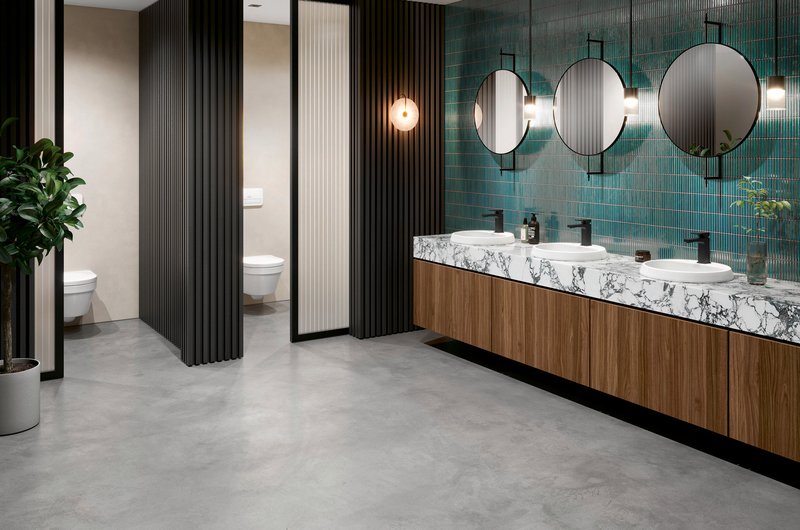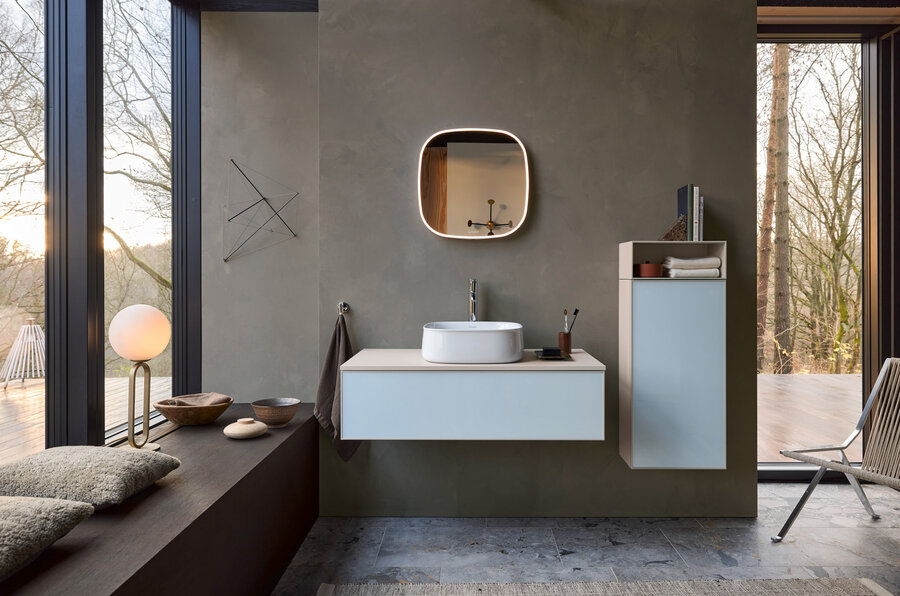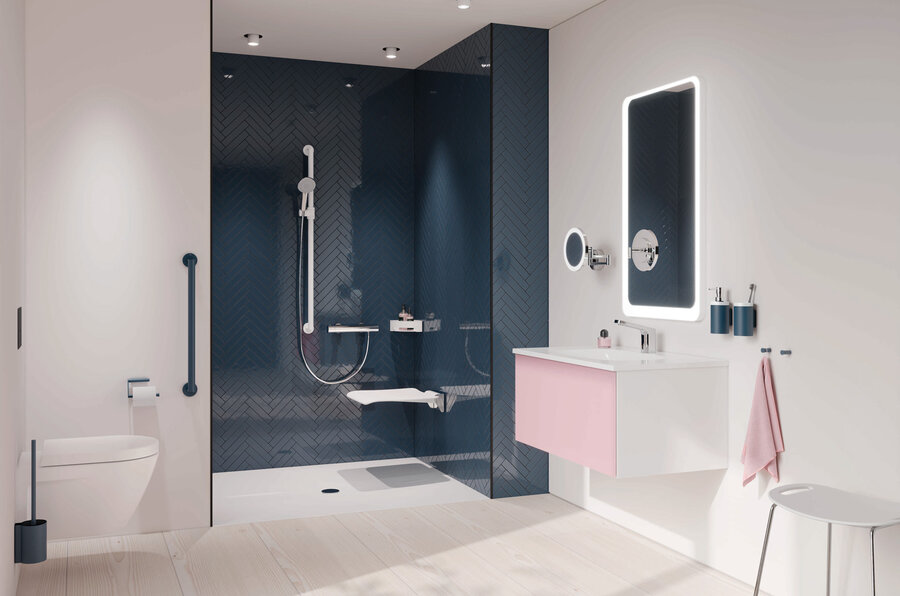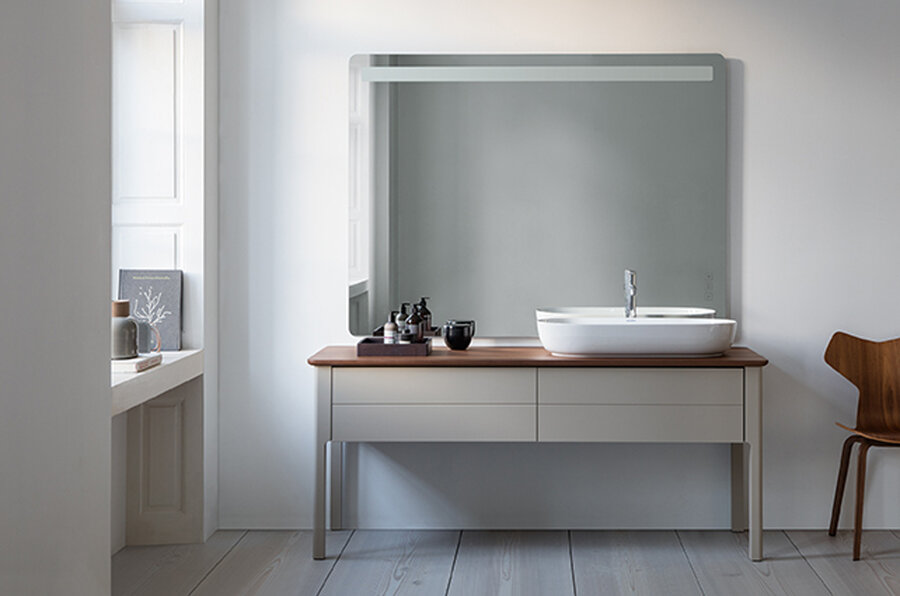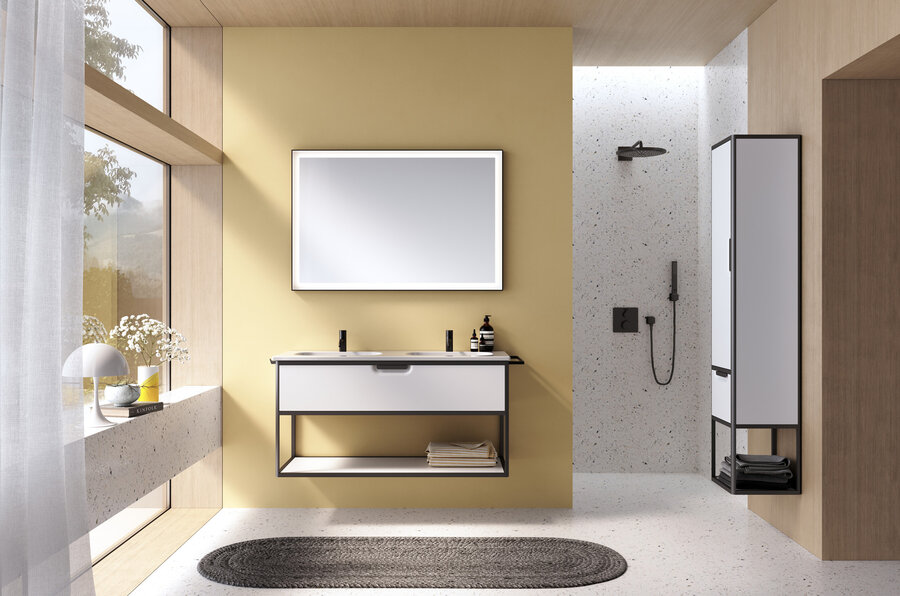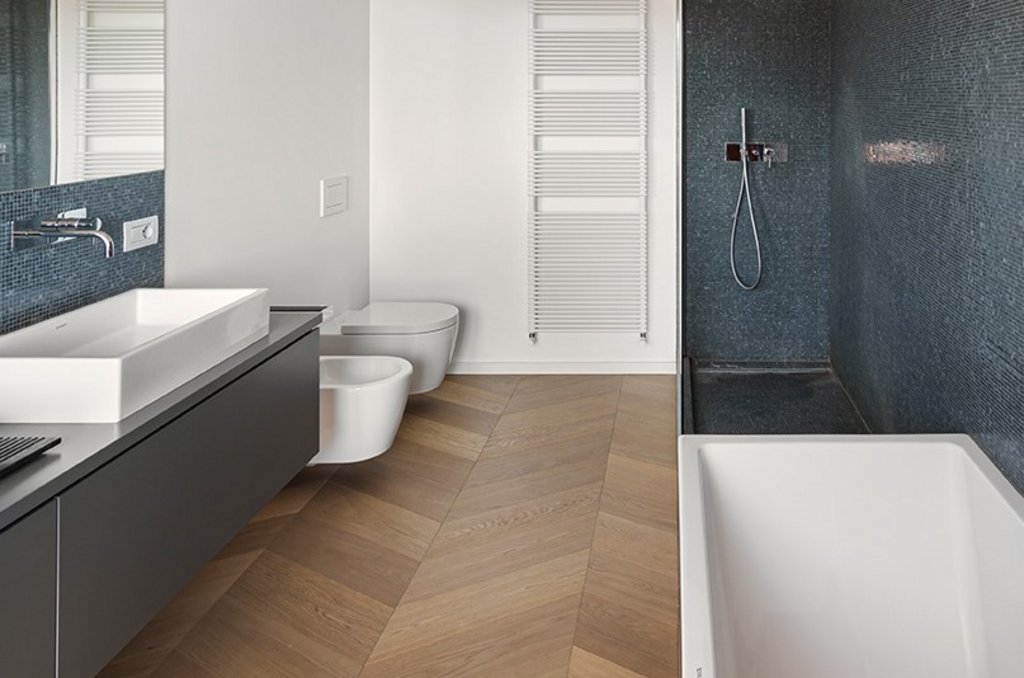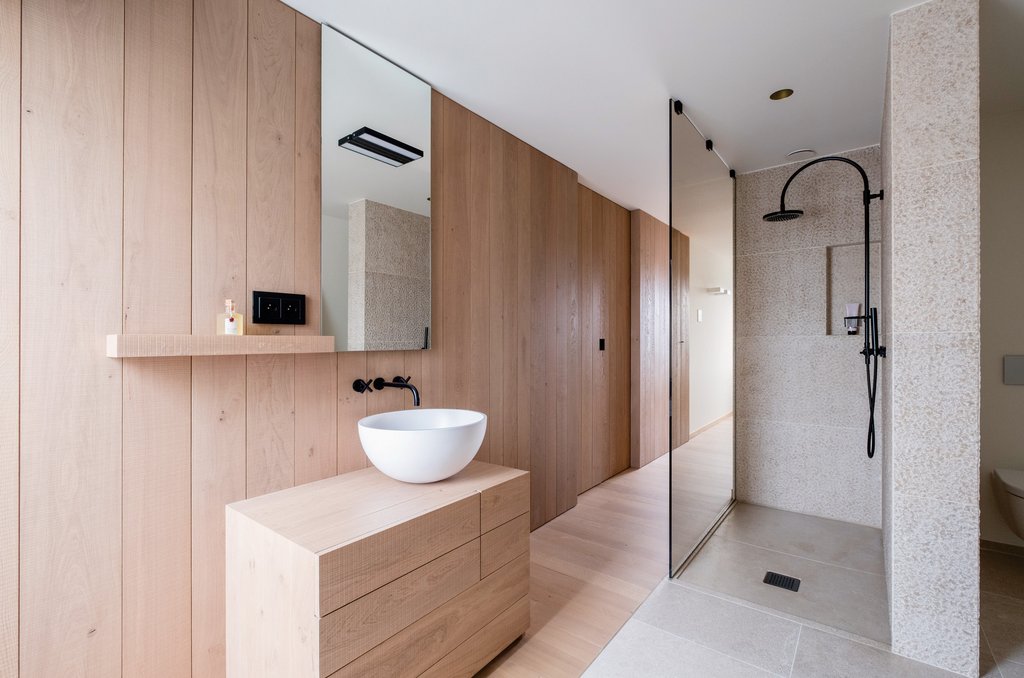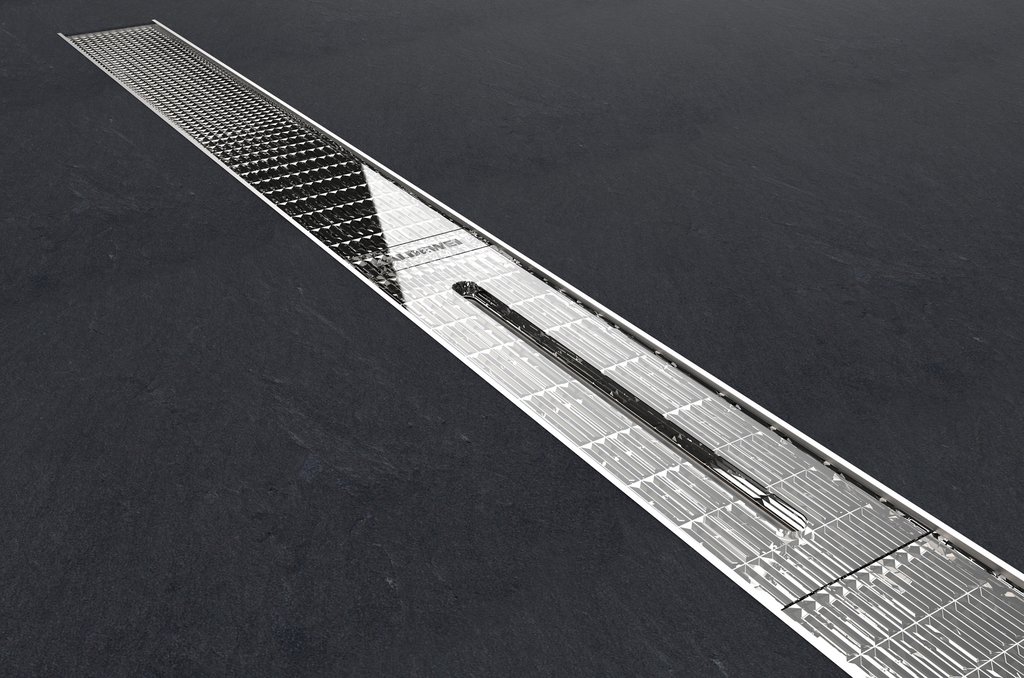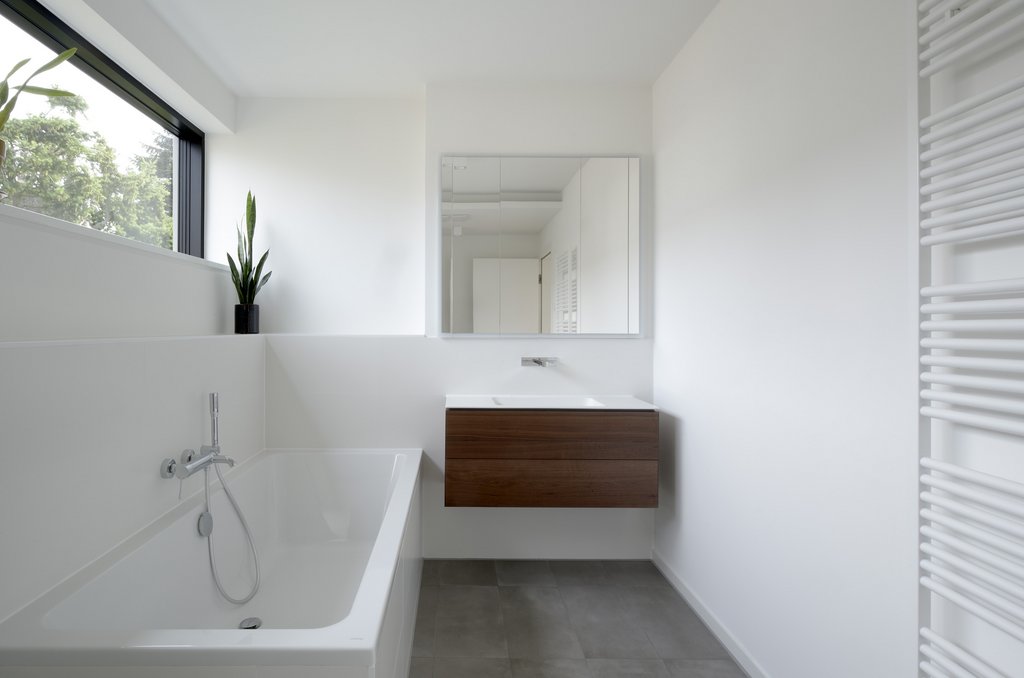Wall-hung vs. floor-standing

In
Germany, wall-hung washbasin combinations and ceramic products are an indicator
of a modern bathroom. Floor-standing furniture offers interesting design
alternatives in bathroom planning.
Photos: Duravit
Back ground: Villeroy & Boch
Wall-hung installation of washbasins & co. is now
standard. In most lifestyle bathrooms, the sanitaryware - from the toilet to
the bathroom furniture - almost seems to float above the floor. However, there
are also good reasons why (more) floor-standing objects are being used in modern
bathroom planning.
The history of the bathroom has been rewritten time and time
again. It is usually fuelled by technical achievements, material innovations or
develops in line with people's needs and the architectural framework. Product
traditions and aesthetic archetypes developed from the personal hygiene culture
and technical equipment. For example, a wash bowl with a water jug on the dresser
in the bedroom was for a long time a style-defining furnishing element for the
morning toilet. The triumph of the floor-standing WC is based solely on the
technical conditions of the domestic installation. And the installation of
wall-hung WCs or bidets was only possible with the installation of a stud frame
and is now standard in modern house construction.
Stable wall mounting

Installing WCs, shower toilets, bidets or washbasin
combinations is no challenge in the modern bathroom: the pre-wall is both an
installation and technology module.
Photo: Geberit GIS
Nevertheless, the installation of wall-hung washbasins and
vanity units is still a challenge today. The use of a pre-wall makes installation
much easier. If the furniture combination has to be fixed directly to the wall,
the need to use larger wall plugs can prove problematic. Water and power lines
as well as the drainage pipe can influence the installation and make it more
difficult. Porous brickwork is also not a good basis for installing washbasins on
the wall. Bathroom furniture manufacturers generally provide their own fixing
systems for this purpose, which allow fine adjustment during installation. The
interplay of forces in conjunction with point suspension on the wall should
ensure stable wall mounting. Used storage space, furniture, ceramic washbasins,
fittings and other loads must be absorbed.
Installing WCs, shower toilets or bidets is no challenge in
the modern bathroom. Standardised stud frames disappear into the wall and
accommodate the necessary tank for a sustainable dual flush. The sanitary
products can be firmly and stably installed by a specialised company and easily
replaced if necessary (e.g. for hygiene reasons when tenants change). This has
certainly contributed to the fact that wall-hung products have become
established on the market: In the German-speaking market, it can be assumed
that around 90 per cent of the branded products on offer are designed for wall
mounting in the bathroom.
Wall mounting: modern design and barrier-free benefits
Wall-hung washbasins and ceramic products are particularly
useful in smaller bathrooms, as the seemingly floating fittings make the room
appear larger. But larger bathrooms also benefit from the light look. Larger
washbasin units, such as the currently popular double washbasin units, appear much
more airy. The floating effect can be further emphasised with integrated LED
lighting. Cleaning is also easier with wall-hung sanitary products - at least
as long as the base area under the products is not used to store boxes, cleaning
products or scales. Even in the event of (limited) water damage, the bathroom
products initially remain unaffected by the flooding.
A barrier-free bathroom cannot be realised without wall-hung
sanitary products. The term "barrier-free" guarantees a certain
quality of equipment and is precisely defined for flats in DIN 18040-2: The
living space is considered barrier-free if it is accessible and usable for
people without assistance and without particular difficulty. A washbasin that
can be driven under with a wheelchair is therefore a basic requirement for a
barrier-free bathroom. But even without the requirement for Din-compliant bathroom
planning, the following applies: wall-mounted sanitary products generally
support easy accessibility.
Rental flats in Germany largely standardised

Modern design, spacious appearance and cleaning benefits:
The wall-hung WC is now a standard feature of a modern bathroom.
Photo:
Hansgrohe
It is almost impossible for tenants to change permanently installed
sanitary products. As a rule, the new tenant will find a wall-hung ceramic
washbasin - usually without a vanity unit or other bathroom furniture. From a
practical point of view, the use of floor-standing bathroom furniture to
complete the existing sanitary equipment makes sense, especially in rented
flats. However, many cost-effective solutions for the already installed
washbasin are supplementary solutions with no particular design signature.
Floor-standing bathroom furniture is certainly suitable as
an architectural statement. In contemporary sanitaryware design, minimalist
washbasin combinations make a convincing statement as a living object in
upmarket bathroom fittings. Interior designers particularly like to use
floor-standing ensembles in hotel bathrooms or luxurious flats: sculptural
washbasins emphasise both the homely and the architectural.
Floor-standing products: sturdy and flexible at the same time

The classic ceramic pedestal as a washbasin solution is a very
traditional design option for a floor-standing variant.
Photo: Hommage von Villeroy &
Boch
The fact that more floor-standing washbasin combinations are
being used again in interior design is primarily for aesthetic and conceptual
reasons. They quote furniture such as chests of drawers and tables or use metal
frames to evoke the industrial style. They can create a desired vintage look or
a classic ambience, emphasise the historical character of old buildings and
architectural monuments or serve as zoning objects in modern, loft-style rooms.
Particularly in the contract sector, a bathroom can be
enhanced in many ways with a floor-standing washbasin combination. Renowned
creatives such as Cécile Manz and Philippe Starck also rely on this sturdy
piece of furniture as a design statement in the bathroom. As the ceramic does
not necessarily have to be connected to the wall, the design freedom at the
washbasin is often more varied with a floor-standing washbasin combination.
This trend development has its origins in southern Europe - the type of
fittings and installation is also characterised by regional traditions and
architectural conditions.
A matter of taste vs. architectural conditions
In addition to inexpensive vanity units for the already
installed ceramic washbasin in rented flats, a trend towards floor-standing
sanitary products can be observed in the upmarket commercial sector and in
sophisticated private bathrooms. Due to high technical standards, many
bathrooms in Germany are fitted with wall-hung washbasin combinations, cabinets
and WCs. Wall-hung installation is not only a visual benefit in terms of
interior design and makes cleaning easier, but is also essential for
barrier-free bathroom planning. Wall-hung bathroom fittings often look modern
and progressive, whereas floor-standing sanitary fittings often refer to historical
models and intensify the furniture character of a sanitary product.
